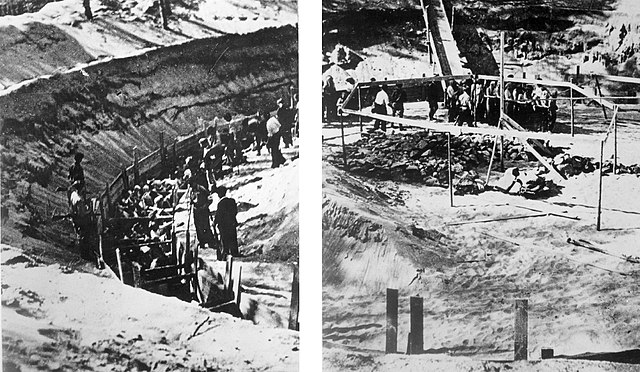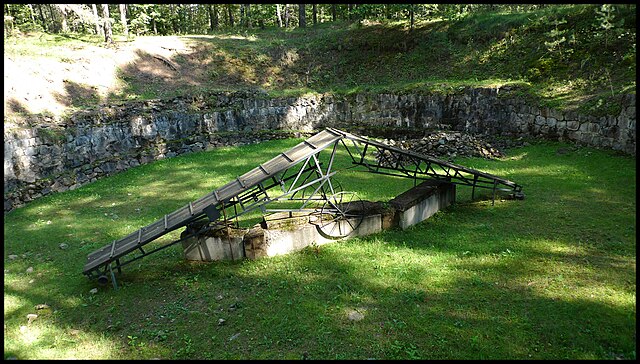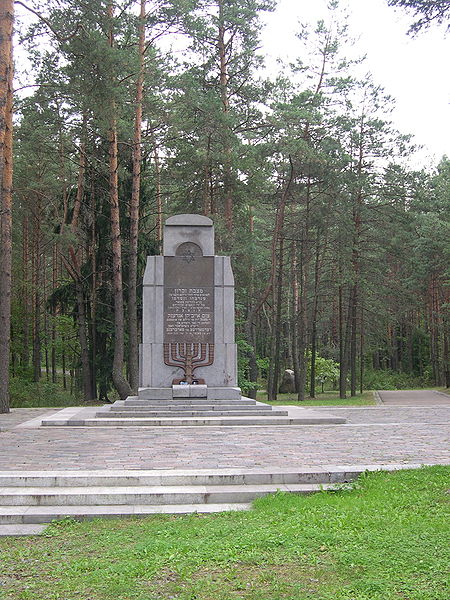The Ponary massacre, or the Paneriai massacre, was the mass murder of up to 100,000 people, mostly Jews, Poles, and Russians, by German SD and SS and the Lithuanian Ypatingasis būrys killing squads, during World War II and the Holocaust in the Generalbezirk Litauen of Reichskommissariat Ostland. The murders took place between July 1941 and August 1944 near the railway station at Ponary, a suburb of today's Vilnius, Lithuania. 70,000 Jews were murdered at Ponary, along with up to 2,000 Poles, 8,000 Soviet POWs, most of them from nearby Vilnius, and its newly formed Vilna Ghetto. Along with 90 LTDF officers who refused to carry orders by the Germans after the Battle of Murowana Oszmianka.
One of six Ponary murder pits in which victims were shot (July 1941). Note the ramp leading down and the group of men forced to wear hoods.
Pit used to burn corpses that were exhumed to destroy evidence of mass murders.
Memorial for Jewish victims.
Memorial for Polish victims.
Ypatingasis būrys or Special Squad of the German Security Police and SD was a killing squad operating in the Vilnius Region in 1941–1944. The unit, primarily composed of Lithuanian volunteers, was formed by the German occupation government and was subordinate to Einsatzkommando 9 and later to Sicherheitsdienst (SD) and Sicherheitspolizei (Sipo).p.15 The unit was subordinated to German police, and had no official autonomy. In Polish they were colloquially called strzelcy ponarscy.
Original Soviet built memorial to the Soviet Victims in the Paneriai Woods





